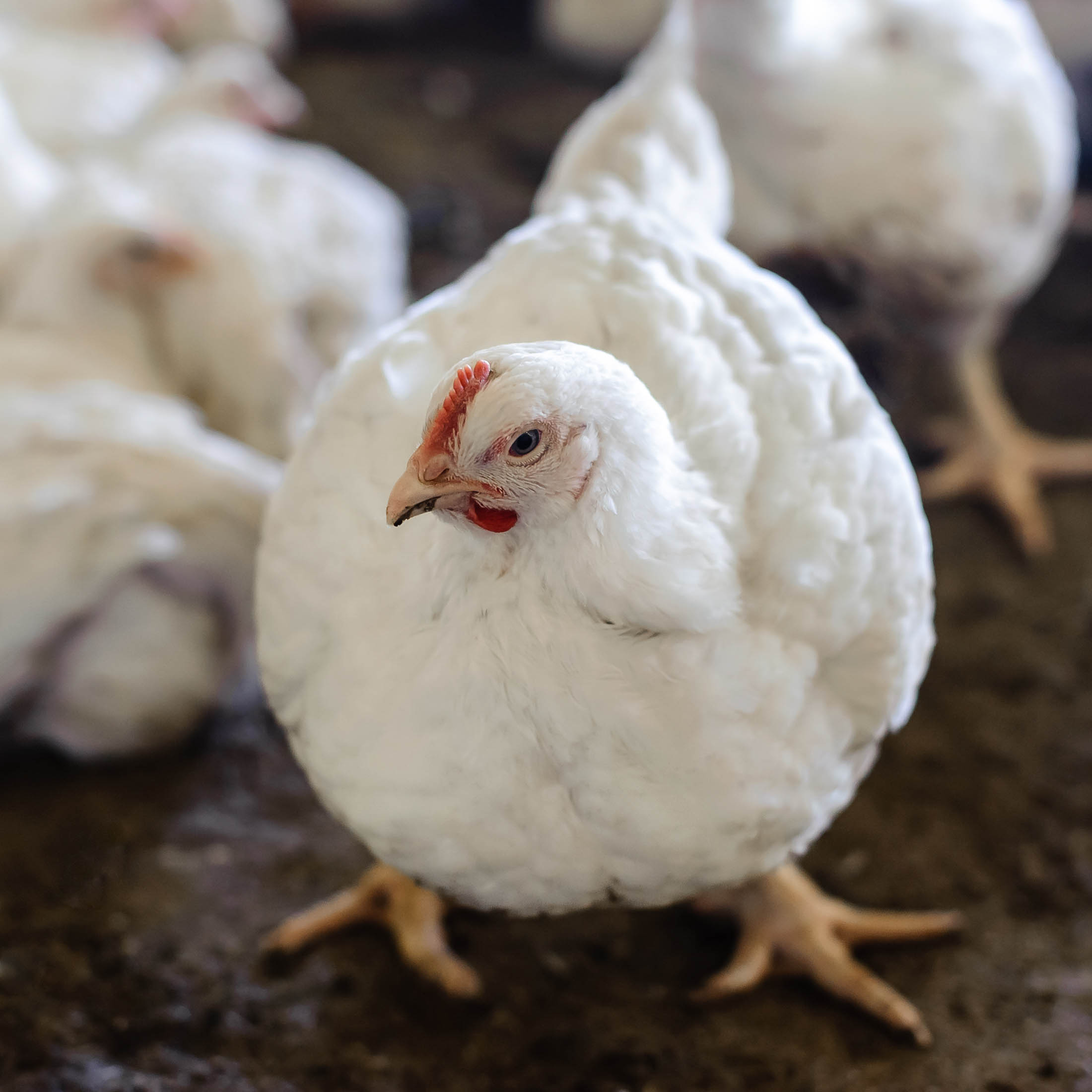The study assessed the effect of the continuously increased digestible amino acid intake driven by diets formulated with productive energy (PE) on broiler performance and body composition. It developed a mechanistic model to explain the response. 90 floor pens were assigned to 5 feeding phases and treated as independent experiments using fresh birds in each phase. Starter, Grower, and Finisher 1, 2, and 3 pens had 30, 23, 18, 16, and 16 birds, respectively. Each phase included 3 treatments: T1, diets formulated with apparent metabolizable energy (AMEn), and T2 and T3 formulated with PE (83 and 92% of PE requirement, respectively). Feed intake (FI), BW, BW gain (BWG), feed intake (FI), feed conversion ratio (FCR), and body composition and processing weights (using Dual-Energy X-Ray Absorptiometry) were determined by phase. The gains of BW, processing weights (carcass, CAR; breast fillet, BRE; tenderloins, TEN; wings, WIN; leg quarters, LQU) and body chemical fractions (protein, PR; fat, FA; lean mass, LM) were fitted to Gompertz 3P First Derivative (GFD) and the calculated cumulative effects (C-EFF) of feeding the treatment diets continuously across phases (cFI, cBW, cCAR, cBRE, cTEN, cWIN, cLQU, cPR, cFA, cLM, respectively) were obtained by applying GFD’s obtained coefficients to the basic Gompertz 3P equation. Cumulative BWG (cBWG) was calculated with cBW, and cumulative FI (cFI) with FCR and cBWG. 9 additional pens were fed the treatment diets continuously 1-56 days, 148 birds were processed at 56 d to determine processing weights, and actual cumulative effects (A-EFF) were obtained by fitting the data to Gompertz 3P model. Response to 100% PE requirement (T4) was estimated by the linear regression of T2 and T3. Bootstrapping and Monte Carlo techniques were applied in JMP Pro 16 to obtain T4 data. ANOVA and Student’s t-test were applied. C-EFF and A-EFF data were compared. Increasing PE (T2, T3, and T4) produced higher effects under the actual continuous feeding scenario (A-EFF) compared with their corresponding calculated effect (C-EFF) on BW (P=0.01), carcass yield, body protein, and body lean mass (P<0.05) at 56 d, suggesting an improved protein synthesis rate the higher the diet PE. C-EFF of T4 on BW indicated +67 g at 56 d (P=0.119) compared with its A-EFF of +144 g (P<0.001) at the same age. The mechanistic model indicated that the higher amino acid intake driven by productive-energy-formulated diets induced a higher mixed muscle fractional synthesis rate, increasing protein accretion and BWG. In conclusion, feeding continuously PE-formulated diets improves protein accretion, BW, and carcass yield. PE diets show potential to improve broiler response and production efficiency.
Martinez, D., C. Umberson, E. Sheikhsamann and C. Coon. 2025. Higher Amino Acid Intakes Associated with Diets Formulated with Productive Energy Boost Protein Accretion, Weight Gain, and Processing Yield in Broilers. 2025 Poultry Science Association Annual Meeting, Abstract 376
